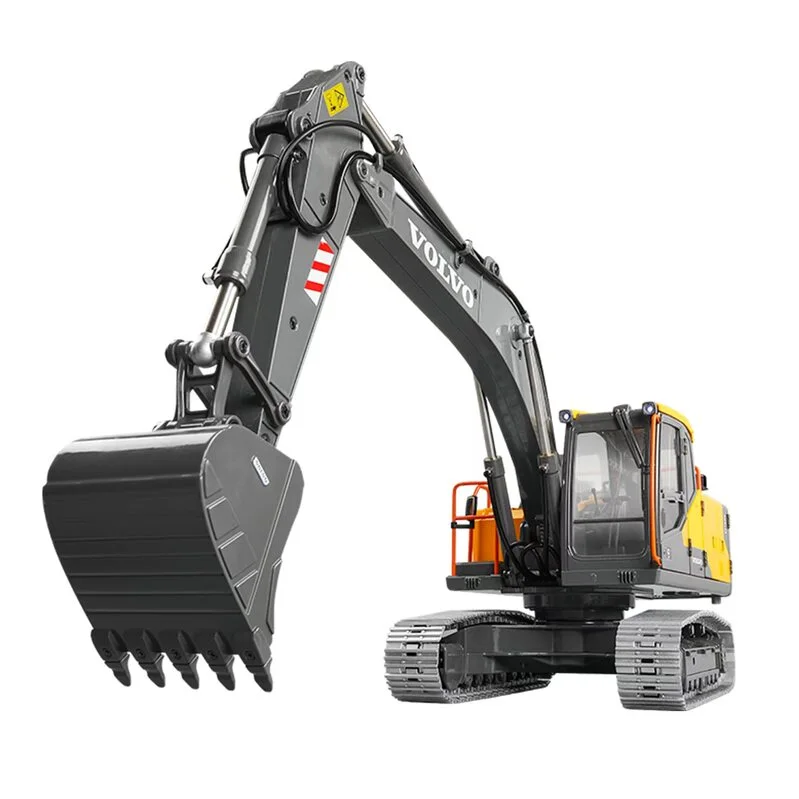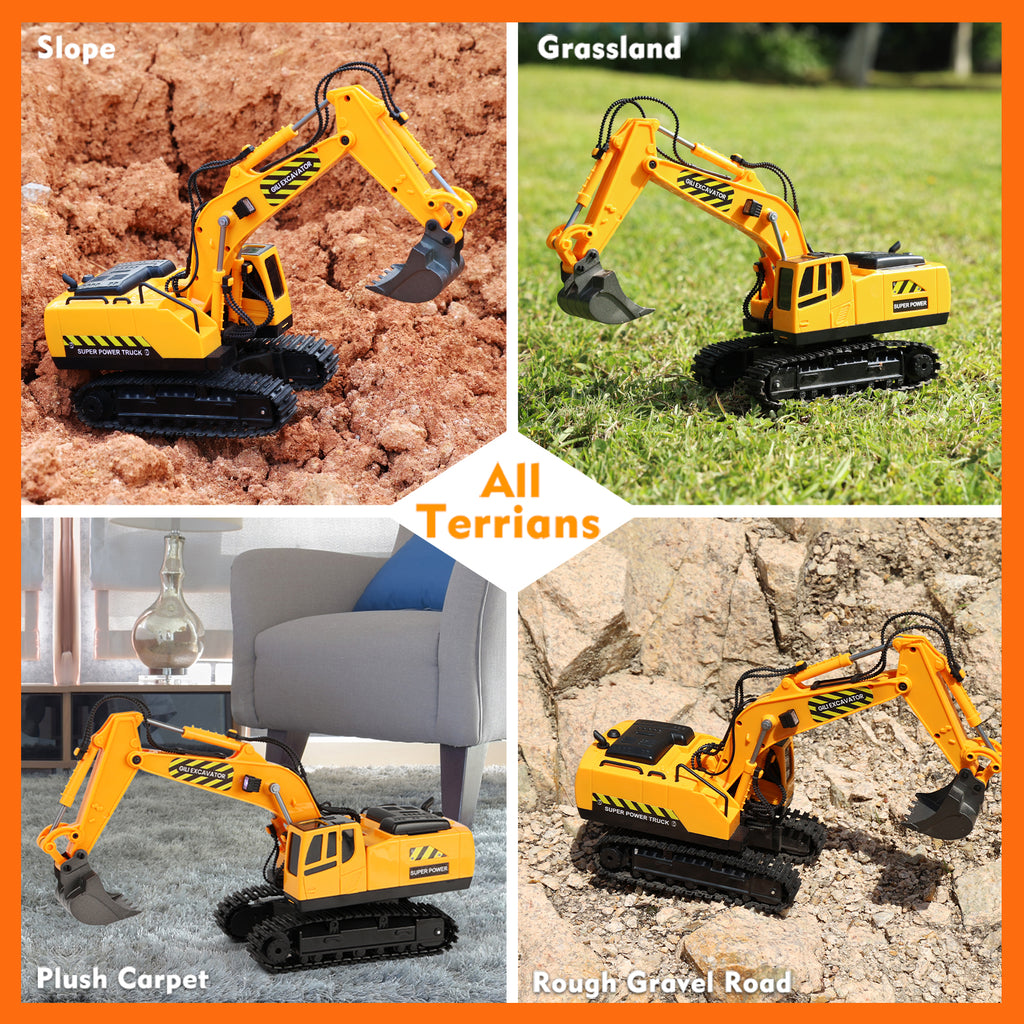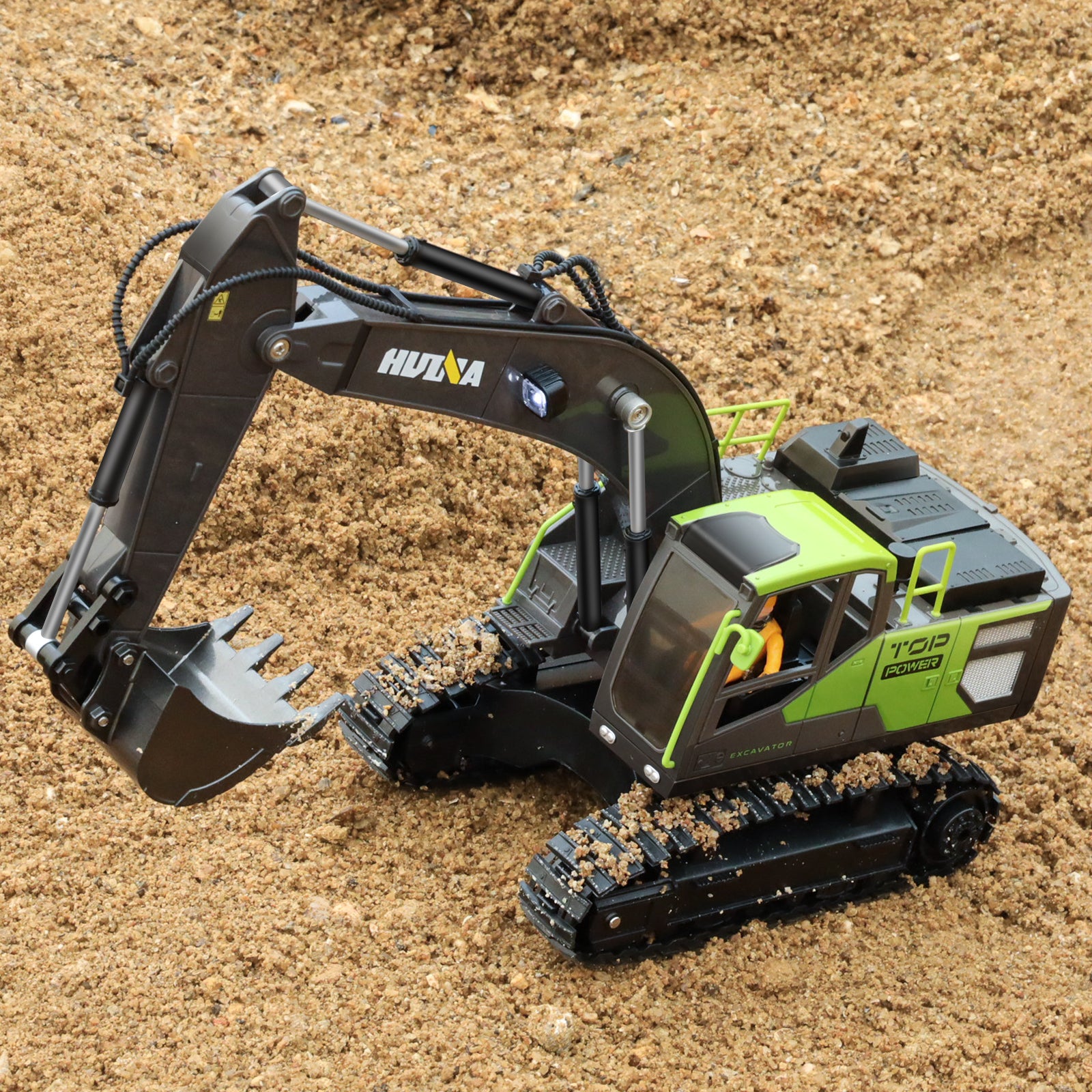The Top Benefits of Integrating a remote control excavator into Your Team
Wiki Article
The Crucial Functions of Excavator That Make Things a Must-Have Device
Excavators are important in the building and construction and landscaping markets. Their functional add-ons permit a variety of jobs, from excavating to demolition. Furthermore, they boast superior excavating deepness and reach, powered by robust engines. Operator comfort and portable layouts enhance usability in different environments. Nonetheless, what genuinely establishes excavators apart are their sophisticated hydraulic systems and longevity. Understanding these features can clear up why they are considered essential tools on any kind of task website.Functional Add-ons for Enhanced Capability
Although excavators are powerful equipments on their own, the enhancement of functional attachments substantially enhances their performance. These add-ons change a common excavator into a multi-purpose tool, ideal for a variety of jobs. Buckets, for example, been available in different shapes and dimensions, making it possible for drivers to dig, scoop, and move products effectively. Hydraulic thumbs can be added for improved gripping and handling of large things, such as logs or rocks.Furthermore, specialized attachments like augers and breakers allow for boring and demolition job, increasing the excavator's energy on building and construction sites. remote control excavator. Grapples are an additional alternative, ideal for relocating and arranging particles. This adaptability not only raises efficiency but also minimizes the demand for multiple equipments, saving time and prices. By equipping excavators with the appropriate attachments, drivers can tackle varied tasks, making them crucial in the construction industrySuperior Digging Deepness and Get To
Excavators are made with exceptional excavating depth and reach, enabling them to steer in limited spaces and gain access to hard-to-reach locations. This capacity is critical for various building and construction and excavation tasks, where conventional equipment might fail. With adjustable boom arms and extendable tracks, excavators can quickly navigate irregular surface while preserving stability.The digging deepness can differ significantly among versions, commonly ranging from 10 to 25 feet, depending upon the style and purpose. This function allows drivers to dig deep into structures, trenches, and other deep frameworks successfully. Additionally, the reach of an excavator permits specific excavating and material handling without rearranging the equipment regularly, saving time and labor costs.Ultimately, the exceptional excavating deepness and reach of excavators make them essential for experts looking for to complete complex jobs with accuracy and efficiency. Their adaptability boosts efficiency on work sites, showcasing them as a vital tool in modern building.Powerful Engine Efficiency

Powerful engine performance plays an essential duty in the capabilities of an excavator when it comes to effectiveness and efficiency on building and construction sites. A robust engine generates significant horse power, allowing the machine to tackle sturdy tasks effortlessly - remote control excavator. This toughness converts into faster cycle times, allowing drivers to full jobs more quickly.Additionally, effective engines provide the essential torque to take care of difficult terrains and differed tons, ensuring that the excavator can do effectively under various problems. Whether it is raising, digging, or relocating materials, the engine's performance directly affects the overall operational effectiveness of the machine.Furthermore, improvements in engine innovation have actually resulted in improved gas effectiveness, decreasing operational prices while keeping power output. Ultimately, the engine's performance works as the backbone of an excavator, attesting its standing as a crucial tool in the construction sector
Advanced Hydraulic Systems

Improved Raising Capability
A significant enhancement in lifting capability can be credited to advanced hydraulic systems located in contemporary excavators. These systems use high-pressure liquid to produce higher force, allowing operators to raise heavier lots with simplicity. The design behind these hydraulics guarantees peak efficiency, offering an impressive power-to-weight proportion that improves overall performance. Because of this, excavators can deal with requiring tasks, such as raising big materials or equipment, without endangering security. In addition, the robust layout of hydraulic elements adds to enhanced sturdiness and dependability, making them suitable for different building and construction environments. This enhanced lifting ability not only reduces the time needed for jobs yet likewise minimizes the requirement for additional machinery, confirming important for both performance and cost-effectiveness in the construction market.Enhanced Accuracy Control
Although typical excavators frequently had problem with precision, modern hydraulic systems have actually transformed control systems, allowing drivers to execute tasks with exceptional accuracy. These innovative systems utilize proportional control valves that permit smoother and much more receptive motions, considerably lowering the margin for mistake. Operators can now finely tune the excavator's activities, making it much easier to navigate limited rooms and take care of delicate products. Improved feedback systems further educate operators of real-time performance, making certain suitable coordination between the equipment and operator. This boosted accuracy not just improves performance however additionally boosts safety on job sites, minimizing the threat of crashes. Therefore, modern-day excavators geared up with sophisticated hydraulic systems are very useful devices for construction and excavation tasks needing careful accuracy.Driver Comfort and Visibility
Driver convenience and presence are crucial parts in the design of modern-day excavators (remote control excavator). Features such as ergonomic seat design, improved exposure choices, and effective control formats considerably enhance the driver's experience and efficiency. Focusing on these aspects guarantees that operators can function properly and safely in numerous problemsErgonomic Seat Style
Comfort and visibility are paramount in excavator design, with the ergonomic seat playing a necessary role in enhancing the driver's experience. An ergonomic seat is crafted to support the driver's body, decreasing tiredness during lengthy hours of operation. Flexible features, such as seat height, back-rest angle, and lumbar support, deal with private choices and advertise ideal pose. These changes enhance comfort and allow the operator to preserve concentrate on tasks without pain. Furthermore, a properly designed seat can give better side assistance, permitting smoother maneuvering when the excavator is in procedure. This thoughtful style not only increases performance yet likewise adds to general safety and security, making certain that operators can execute their obligations effectively and effectively.Improved Exposure Attributes
The style of an excavator extends past just the seat, with improved visibility features playing a significant function in operator comfort and overall safety. Big windows and tactically positioned mirrors provide drivers with a clear sight of their surroundings, lessening unseen areas. This style consideration permits far better spatial awareness, which is important in busy work settings. Additionally, several excavators include rearview cameras and advanced surveillance systems that assist operators in maneuvering limited rooms. The combination of these presence features not just promotes safety and security but also minimizes driver fatigue by making it possible for much easier monitoring of workplace. Eventually, boosted exposure adds to extra efficient operations and helps ensure that excavators can execute their tasks properly and safely.Control Design Effectiveness
While handling top article facility job sites, a reliable control format greatly improves both driver convenience and visibility. A well-designed control arrangement guarantees that operators can access crucial functions with marginal effort, lowering exhaustion throughout long hours. Ergonomic joystick positionings and intuitive switch plans enable seamless operation, enabling operators to keep concentrate on the job handy. Additionally, clear visibility of both the workplace and the control panel is vital for security and accuracy. Modern excavators usually include adjustable seats and control setups to suit different driver preferences, better boosting comfort. Inevitably, an attentively designed control design not only improves performance but additionally promotes a safer working atmosphere by enabling operators to react quickly to changing conditions.Compact Style for Urban Environments
As urban building websites commonly deal with area restraints, a compact style comes to be important for excavators operating in these environments. These machines are engineered to navigate limited areas, permitting for reliable ability to move in jampacked task websites. A minimized footprint enables them to function very closely to existing frameworks, lessening disturbance and maximizing productivity.The portable layout commonly includes much shorter tracks and a tighter transforming radius, facilitating operation in narrow streets and confined areas. Lightweight products add to alleviate of transportation, making it easier to move the excavator from one place to another within the metropolitan landscape.Additionally, lots of compact excavators are outfitted with functions such as functional add-ons and extendable arms, improving their capability while preserving a small dimension. This flexibility enables drivers to take on a selection of jobs, from digging to demolition, all while suitable effortlessly right into the restraints of metropolitan settings.
Longevity and Upkeep Considerations
Resilience stands as a vital consider the efficiency and longevity of excavators, especially in requiring metropolitan settings. These equipments undergo strenuous problems, including differing soil types, severe temperatures, and high-frequency use. High-quality materials and robust construction are required for making certain that excavators can hold up against these obstacles without jeopardizing functionality.Regular upkeep is equally vital in protecting sturdiness. Scheduled inspections, prompt oil changes, and the substitute of used elements contribute considerably to an excavator's life-span. Operators needs to also take notice of hydraulic systems, tracks, and undercarriages, as these components often birth the burden of wear and tear.Investing in sturdy excavators with extensive upkeep plans improves integrity and minimizes downtime, eventually bring about enhanced performance on construction sites. As a result, comprehending the interplay between resilience and maintenance is essential for any person considering the procurement of an excavator for city jobs.Regularly Asked Concerns
How Do Excavators Compare to Other Building And Construction Equipment?
Excavators attract attention amongst building and construction devices due to their versatility, allowing jobs such as training, digging, and grading. Contrasted to others, their hydraulic capacities supply better effectiveness and power, making them crucial on various work websites.What Security Features Are Consisted Of in Modern Excavators?
Modern excavators include various security functions, consisting of rollover security systems, alarm systems, and progressed visibility enhancements. These aspects interact to decrease threats, making certain operator safety and security while enhancing performance on building and construction websites and various other demanding atmospheres.
Can Excavators Be Used in Wintertime Issues?
Excavators can indeed be used in wintertime problems, offered they are equipped with ideal winter months add-ons and precautions are taken. Proper upkeep and changes improve their performance, guaranteeing efficient operation in spite of tough climate circumstances.What Is the Ordinary Life-span of an Excavator?
The typical life-span of an excavator typically varies from 7,000 to 10,000 hours of operation. This duration can significantly depend on maintenance practices, reference operating conditions, and the particular design's sturdiness and layout features.How Do I Select the Right Excavator Size for My Task?
Picking the ideal excavator dimension entails reviewing job range, site problems, and product types. Consider factors like reach, depth demands, and weight capacity to assure optimal efficiency and safety during procedure. Dimension matters considerably additional reading in job success. Furthermore, the reach of an excavator permits for specific digging and product handling without repositioning the machine often, conserving time and labor costs.Ultimately, the premium excavating depth and reach of excavators make them essential for specialists looking for to complete complex jobs with accuracy and effectiveness. Convenience and presence are paramount in excavator layout, with the ergonomic seat playing a crucial role in boosting the driver's experience. The layout of an excavator prolongs beyond just the seat, with boosted visibility attributes playing a significant role in operator convenience and total safety and security. Modern excavators frequently incorporate adjustable seating and control settings to fit different driver preferences, additionally enhancing convenience. Light-weight materials contribute to ease of transport, making it easier to relocate the excavator from one area to an additional within the urban landscape.Additionally, many compact excavators are geared up with features such as extendable arms and flexible attachments, improving their capability while maintaining a little size.Report this wiki page